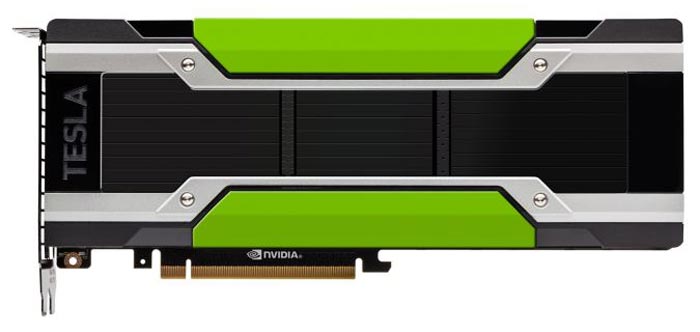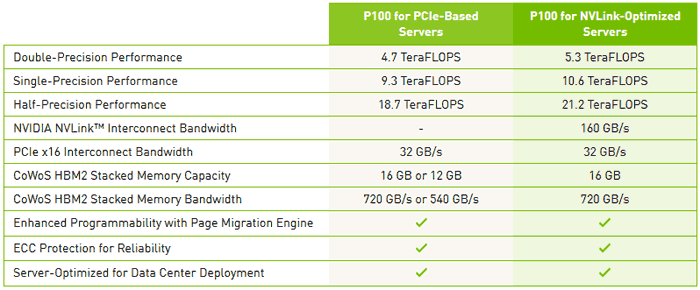Nvidia has launched its Tesla P100 GPU PCIe accelerator cards. These cards, typically put to use in supercomputing and HPC systems, or AI and deep learning systems, and tasked with analysing huge data sets for research in the likes of cosmology, materials science, seismology, and climatology, are based upon Nvidia's latest Pascal GPU architecture. Nvidia trumpets that the new PCIe accelerators can "provide the throughput of more than 32 commodity CPU-based nodes and deliver up to 70 percent lower capital and operational costs".

The Tesla P100 for PCIe provides Nvidia's newest, most powerful GPUs in a standard PCIe form factor, compatible with many of today's GPU-accelerated servers. This PCIe card provides most of the benefits of the Tesla P100 for NVLink-optimized servers but in a more widely adopted form factor. Headline performance figures are 4.7 teraflops double-precision performance, 9.3 teraflops single-precision performance, and 18.7 teraflops half-precision performance with Nvidia GPU BOOST technology. Remember this performance uplift is enjoyed alongside up to 70 per cent data centre energy cost reductions.
Tesla P100 for PCIe Specifications:

Key features of the Tesla P100 for PCIe are as follows:
- Unmatched application performance for mixed-HPC workloads - Delivering 4.7 teraflops and 9.3 teraflops of double-precision and single-precision peak performance, respectively, a single Pascal-based Tesla P100 node provides the equivalent performance of more than 32 commodity CPU-only servers.
- CoWoS with HBM2 for unprecedented efficiency - The Tesla P100 unifies processor and data into a single package to deliver unprecedented compute efficiency. An innovative approach to memory design - chip on wafer on substrate (CoWoS, tech from TSMC) with HBM2 - provides a 3x boost in memory bandwidth performance, or 720GB/sec, compared to the Nvidia Maxwell architecture.
- PageMigration Engine for simplified parallel programming - Frees developers to focus on tuning for higher performance and less on managing data movement, and allows applications to scale beyond the GPU physical memory size with support for virtual memory paging. Unified memory technology dramatically improves productivity by enabling developers to see a single memory space for the entire node.
- Unmatched application support - With 410 GPU-accelerated applications, including nine of the top 10 HPC applications, the Tesla platform is the world's leading HPC computing platform.
Nvidia Tesla P100 accelerators for PCIe will be employed by the Swiss National Supercomputing Centre in Lugano, Switzerland as the main processing component of an upgraded version of Europe's fastest supercomputer, the Piz Daint system, later this year. According to a senior professor at the centre, the new Pascal GPUs will more than double the current system's performance.

The first Tesla P100 GPU accelerators for PCIe-based systems are expected to be available beginning in Q4 2016. In addition to existing PCIe system upgrades, buyers will be able to configure systems from resellers and server manufacturers including Cray, Dell, Hewlett Packard Enterprise, IBM and SGI.













